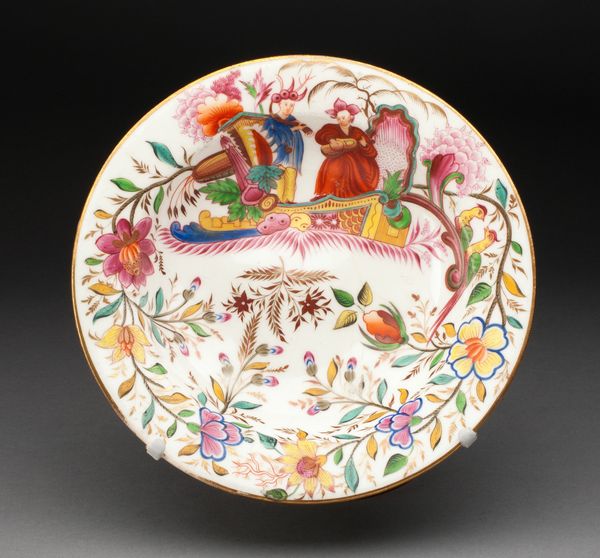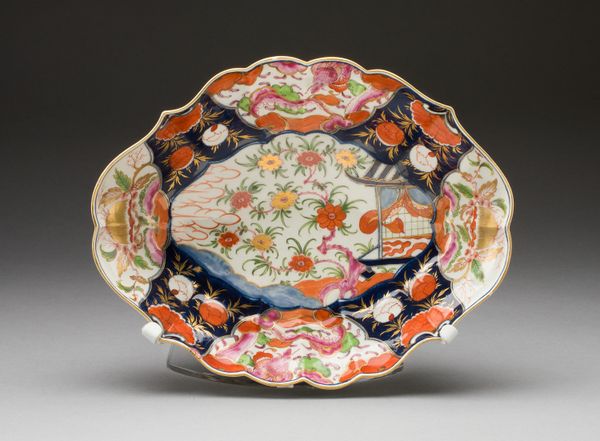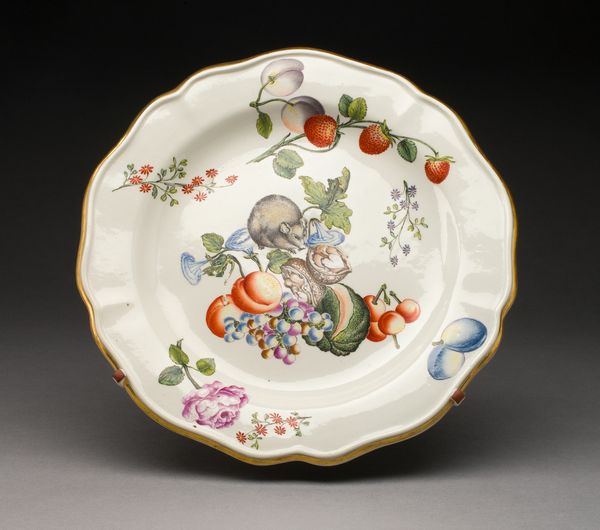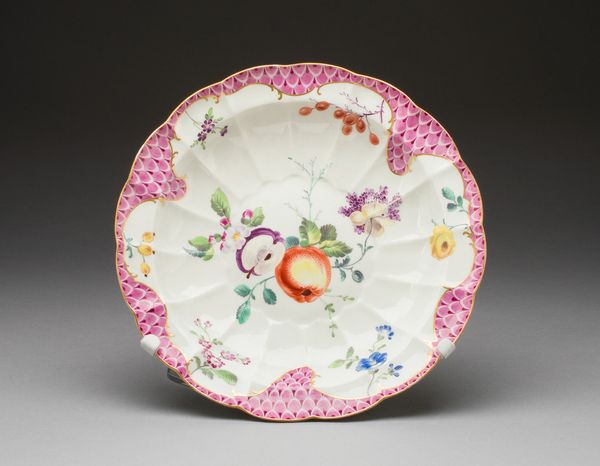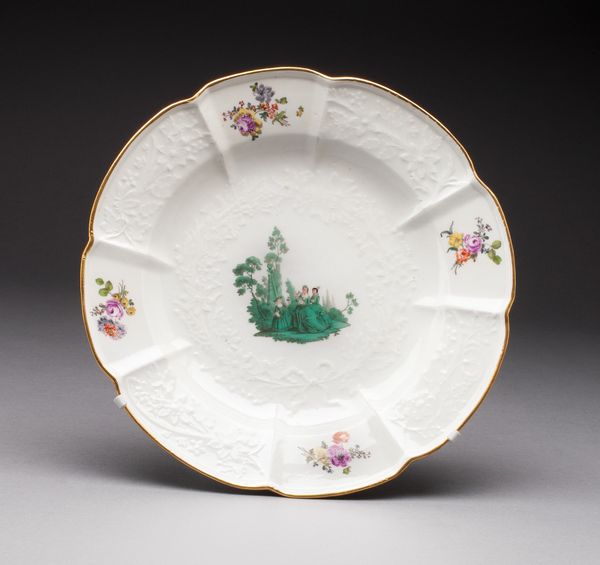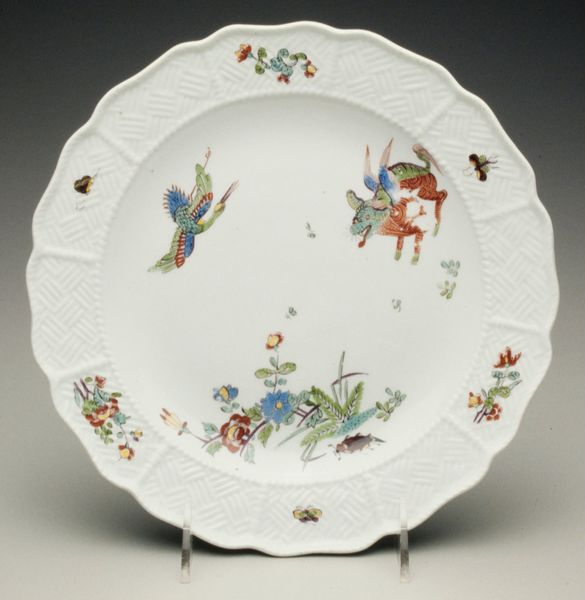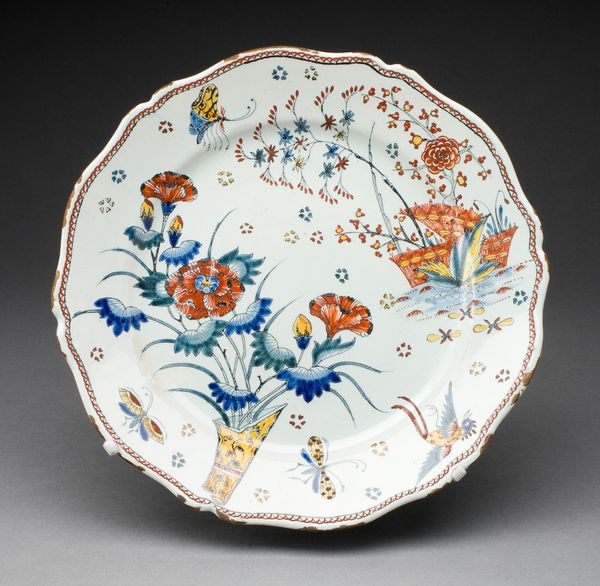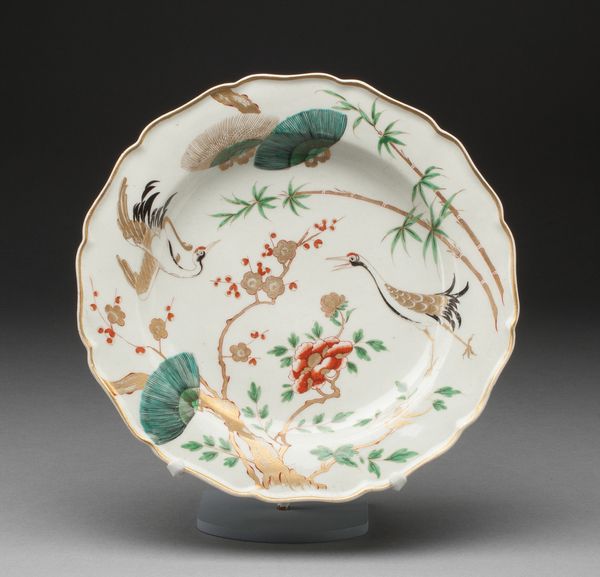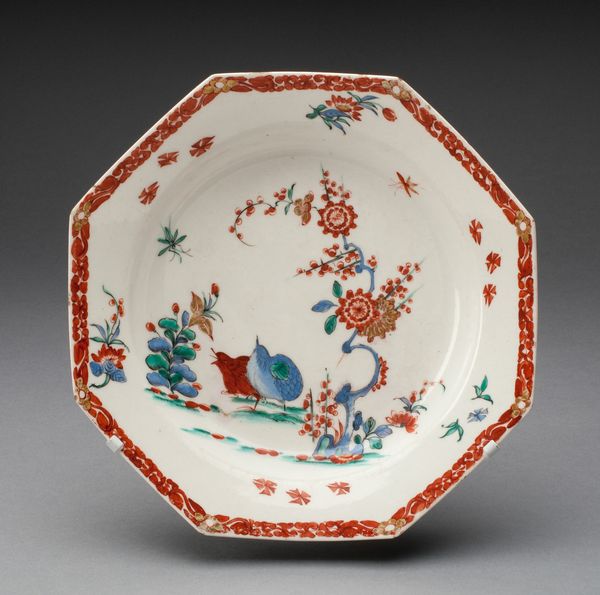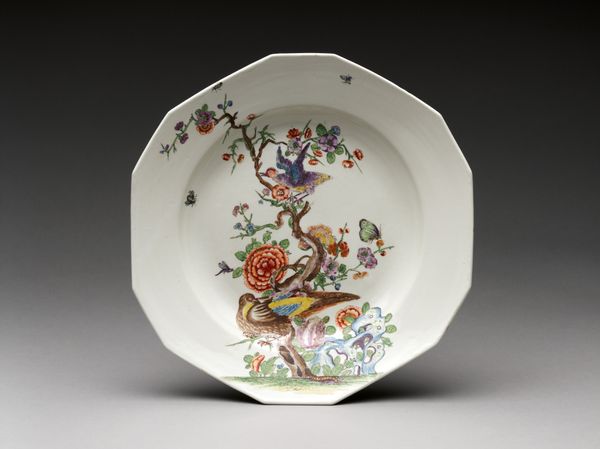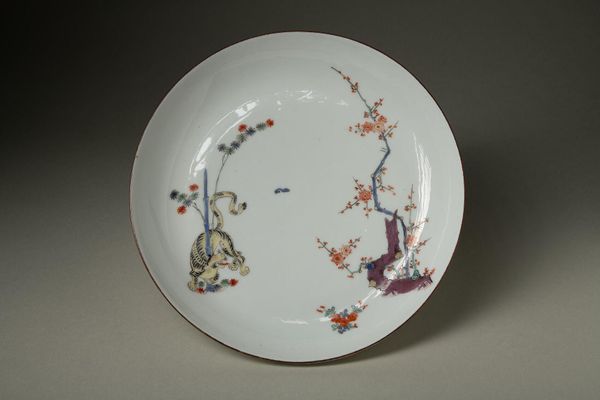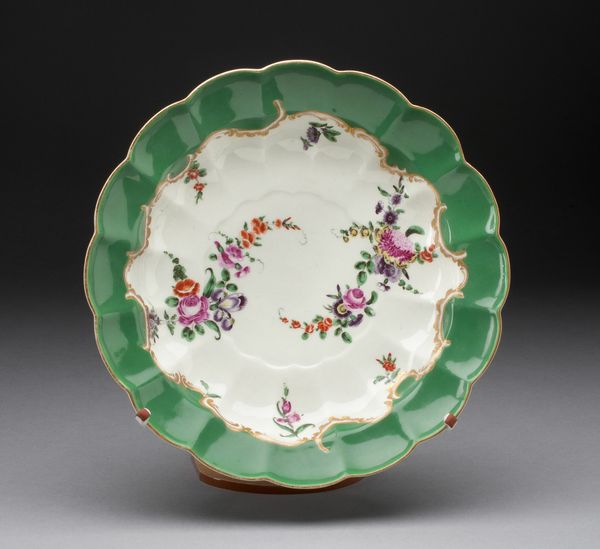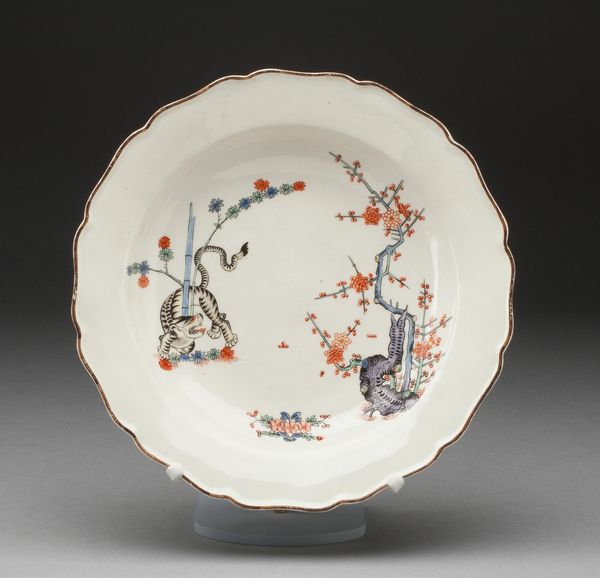
ceramic, porcelain
#
decorative element
#
asian-art
#
ceramic
#
porcelain
#
orientalism
#
ceramic
#
decorative-art
Dimensions: Diam. 22.7 cm (8 15/16 in.)
Copyright: Public Domain
Curator: Before us is a porcelain plate, dating from about 1800 to 1825, crafted by the Worcester Royal Porcelain Company. You can find it at the Art Institute of Chicago. Editor: It’s quite charming! The colors are so vibrant, and the scene depicted feels almost dreamlike, a stylized garden perhaps. I'm struck by the gold detailing. Curator: Absolutely, the design embodies what we know as Orientalism. Notice how the English manufacturer appropriated and reimagined East Asian motifs, reflecting the period’s fascination with, and often misrepresentation of, Eastern cultures. Editor: Yes, the composition feels like a Westerner’s imagined “East”. There is a pagoda-like structure, along with what appears to be flora and fauna native to the area, although stylized and romanticized. It presents a flattened and somewhat artificial vision of Asian aesthetics. The leaves on the border are a different motif entirely. Curator: The Worcester Royal Porcelain Company was keen on producing such wares as a form of catering to popular tastes. The aesthetic choices made would very likely resonate with the fashionable sensibilities of its British clientele during that time. Porcelain was already associated with the East, which made the aesthetic choices profitable. Editor: Right. This wasn’t necessarily about understanding another culture, but capitalizing on a trend. And let’s be real, that red-gold rim makes the whole thing sing, even if that song has questionable origins! Curator: Indeed. And given that it's a plate, its intended use adds another layer. It wasn’t necessarily meant for deep contemplation in a gallery but rather for everyday use, bringing these reimagined "Eastern" scenes into domestic settings. It's the quiet cultural impact that these pieces wield. Editor: It's fascinating how a common object like this becomes a carrier of historical and cultural baggage. When we view it today, it opens conversations about appropriation and the complicated relationship between East and West, and speaks to issues of representation. Curator: Agreed. Examining this plate offers insights into the consumption and reception of culture, especially the Victorian upper classes' embrace of the "exotic". Editor: I am always in favor of how art reveals the complicated narrative of exchange and interpretation. It is a very interesting object of historical reflection.
Comments
No comments
Be the first to comment and join the conversation on the ultimate creative platform.
